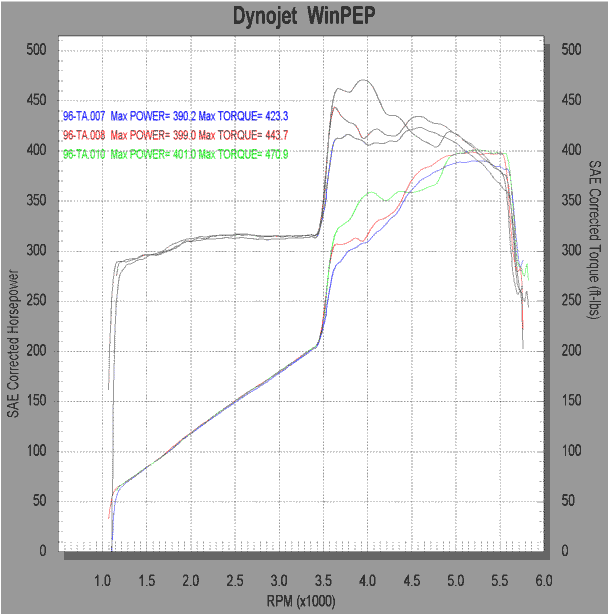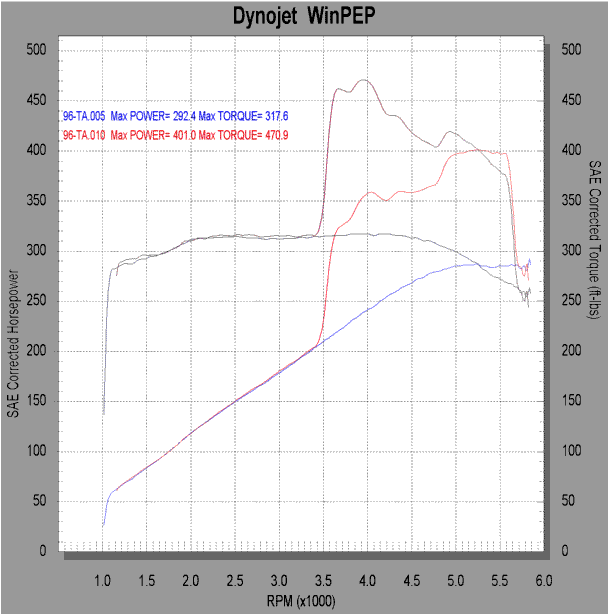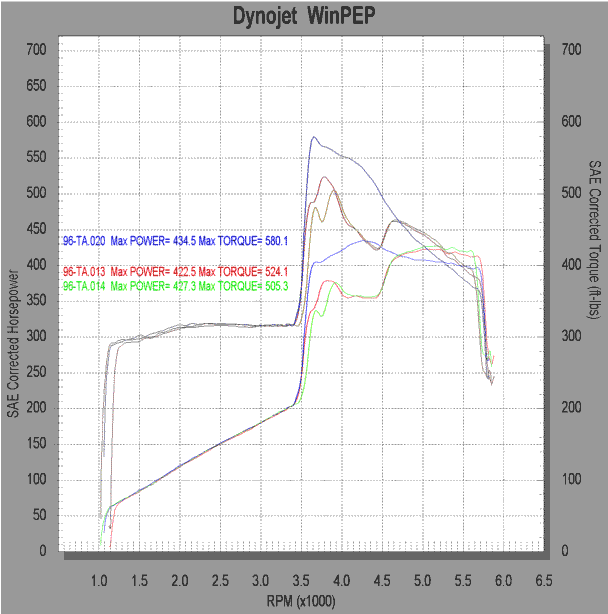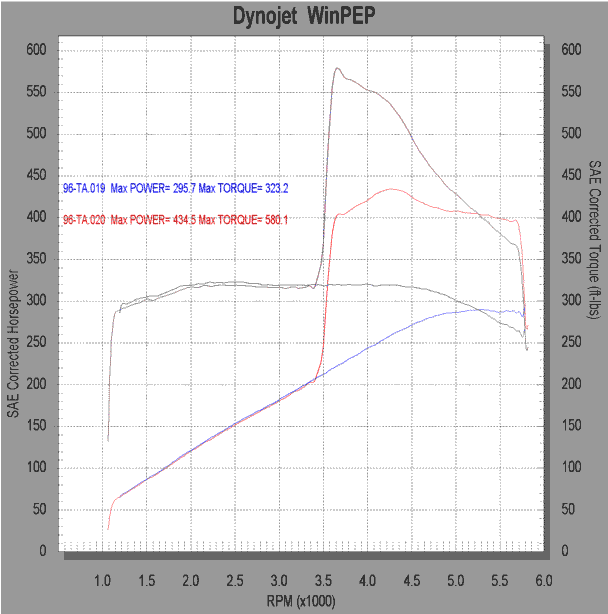

Here you can see where I played with several sizes of fuel jets with the same, supplied .052" nitrous jet,
to achieve the best overall power, O2 sensor mV output and knock sensor response. Baselines done before hitting
the button showed that car got 2 degrees of retard from the knock sensor from around 3800rpm to about 5100rpm.
The light blue horsepower curve and the dark blue torque curve graphs show the output during the run with the supplied
.025" fuel jet. Fuel pressure is stock at 46psi @ WOT. Here, we peaked at 390.2hp and 423.3lb-ft of torque
with a nice graph. The curve was excellent, but O2 values of 750mV, and 3 degrees of knock retard prompted us to
go larger on the fuel jet.
The red horsepower curve and maroon torque curve represent the output with the same .052" nitrous jet, but
a .026" fuel jet. Peak figures went up to 399.0hp and 443.7 lb-ft of torque. The O2 values were in the 810mV
range on this run, with the knock retard being still at 3 degrees from 3600rpm to 5000rpm.
At this point, we went another .002" on the fuel jet, to achieve a .028" fuel jet coupled with the .052"
nitrous jet. This combination yielded 401.0hp with 470.9 lb-ft of torque. O2 values were perfect, being right around
830mV, with the same knock retard. This graph left a little to be desired in the way of curve shape, but the overall
numbers and area under the curve were the best yet.

This shows the final outcome of the 100 horsepower jetting sequence. We ended up with a .052" nitrous jet
and a .028" fuel jet yielding a gain of 108.6 horsepower and 153.3 lb-ft of torque. These are
excellent numbers for the 100 shot.

Here we did the same scenario again, using different size fuel jets with the supplied .063" nitrous jet. Since
we found the supplied fuel jet to be too lean on the 100hp shot, we decided to start with a slighly richer .037"
fuel jet (versus the .035" suggested jet). This proved to have a nice curve with 434.5hp and 580.1 lb-ft of
torque! This run showed O2 values of 850mV, and again, knock retard was the same at 3 degrees.
Being ever curious, we then went up to a .039" fuel jet, so see what effect it would have on the car. When
we installed this jet, the car responded with 422.5hp and 524.1 lb-ft of torque. O2 values soared to 890mV, yet
knock retard stayed the same. We can see power fell off dramatically, so we opted to try the other direction, with
a leaner fuel jet.
Dropping back to the originally suggested .035" fuel jet, the car showed 427.3hp and 505.3lb-ft of torque;
a little more horsepower than the richer run, but not nearly as much torque and still not as good as with the .037"
fuel jet.

Finishing up led us back to the .037" fuel jet combined with the supplied .063" nitrous jet. You can
see the car gained a total of 138.8 horsepower and 256.9 lb-ft of torque!
We found the .062" nitrous and .037" fuel jets to be the preferred ratio
for this kit on this car. With O2 values in the 850mV range and knock retard at a very conservative 3 degrees,
I'm not a bit worried. This provides a SERIOUS kick in the pants when I mash the button. This is a definite must
have! Watch out EVERYONE!
Install pictures are here!